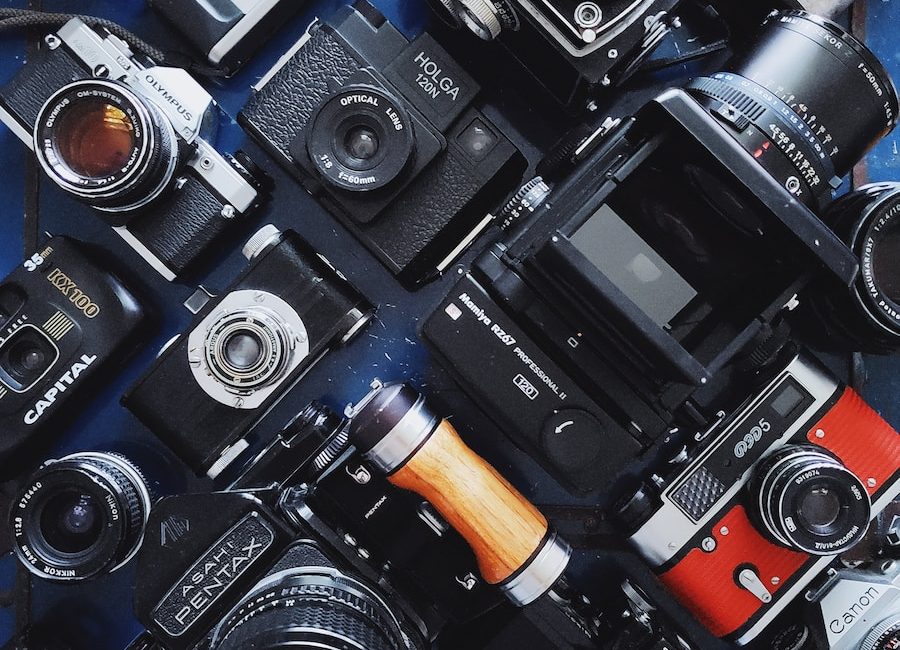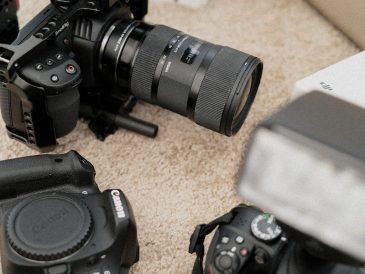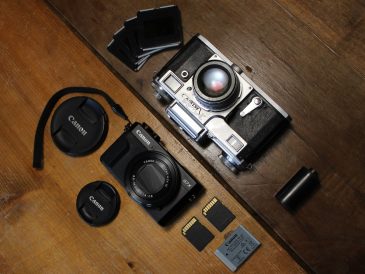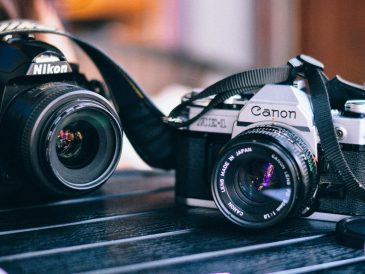Image sensors have come a long way since their introduction, revolutionizing the way we capture and perceive visuals. Over the years, we have witnessed a tremendous evolution in image sensor technology, with advancements being made in resolution, dynamic range, and low light performance. However, this is just the beginning, as the future holds exciting possibilities for image sensors.
One area in which we can expect significant progress is in the development of smaller, more efficient sensors. As technology continues to advance, manufacturers are constantly seeking ways to reduce the size of sensors while maintaining or even improving their performance. This trend towards miniaturization will allow for more compact and lightweight camera designs, making it easier than ever for photographers and videographers to capture stunning images and footage on the go. Moreover, smaller sensors may also open up new possibilities in industries such as medical imaging and surveillance, where the ability to integrate high-quality imaging capabilities into compact devices is crucial.
Enhanced Autofocus Technology: Improving Precision and Speed
Autofocus technology has come a long way since its inception, and advancements in this field continue to improve the precision and speed of capturing subjects in focus. One of the breakthroughs in autofocus technology is the use of phase detection autofocus (PDAF) systems. PDAF allows the camera to quickly determine the distance to the subject by measuring the phase difference between light rays that pass through different parts of the lens. This technology enables faster and more accurate focusing, especially in scenarios where the subject is moving or when shooting in low-light conditions. By implementing PDAF systems, camera manufacturers have significantly reduced the time it takes for the camera to lock focus, resulting in capturing more decisive moments with remarkable precision.
Another notable enhancement in autofocus technology is the incorporation of advanced algorithms and artificial intelligence (AI). These algorithms analyze the scene and subject in real-time, enabling the camera to make intelligent decisions about where to focus. With AI-powered autofocus, cameras can recognize and track subjects, even in complex and unpredictable situations. By continuously adjusting the focus based on the subject’s movement and position, the camera ensures that every shot is sharp and precise. This technology revolutionizes the way photographers work, as it not only saves time but also yields more consistent and high-quality results. As AI continues to evolve, autofocus technology is poised to become even more accurate and efficient, increasing the overall shooting experience for photographers.
High-Resolution Imaging: Pushing the Boundaries of Clarity
With each passing year, advancements in technology continue to elevate the capabilities of high-resolution imaging, pushing the boundaries of clarity to new heights. The demand for sharper and more detailed images has led to the development of cameras with higher pixel counts and increased sensor sizes. These improvements allow for the capture of intricate details and nuances in every shot, resulting in images that are incredibly lifelike and immersive.
In addition to increased pixel counts and sensor sizes, manufacturers are also incorporating advanced image processing algorithms into their camera systems. This enables the cameras to handle the enormous amount of data generated by high-resolution imaging and produce images with exceptional clarity and minimal noise. Furthermore, these algorithms enhance the dynamic range of the images, allowing for a greater range of tonal values and more accurate reproduction of colors. As a result, high-resolution images not only capture the fine details but also deliver stunning overall image quality, bringing the viewer closer to the original scene in all its glory.

Compact and Lightweight Designs: Portability without Compromising Quality
Compact and lightweight designs have become a key focus in the development of digital cameras, catering to the increasing demand for portability without compromising on image quality. Manufacturers are constantly striving to make cameras smaller and lighter, making them more convenient to carry and use in various settings. This trend has been driven by advancements in technology, allowing for the integration of high-performance components within a smaller form factor.
One of the main challenges in achieving compact and lightweight designs is ensuring that the reduction in size does not sacrifice the quality of images produced. Manufacturers have addressed this by utilizing advanced engineering techniques and materials to optimize the layout and structure of the camera body, as well as the arrangement of the internal components. This has resulted in cameras that are not only smaller and lighter but also deliver exceptional image quality, with high-resolution sensors, improved noise reduction, and enhanced dynamic range capabilities. With these advancements, photographers and videographers can now capture stunning visuals without the burden of heavy and bulky equipment.

Advanced Image Stabilization: Capturing Sharper Photos and Videos
With the constant advancements in smartphone photography and videography, capturing stable and shake-free footage has become ever more important. Advanced image stabilization technology has emerged as a key solution to this challenge. By reducing camera shake and compensating for movement, image stabilization not only improves the overall quality of photos and videos but also allows for more creative freedom in capturing dynamic moments.
Modern smartphones employ various types of image stabilization techniques, including optical image stabilization (OIS) and electronic image stabilization (EIS). OIS utilizes a combination of gyroscopes and motors to physically shift the camera lens, counteracting any unintentional movement. This technology is particularly effective in low-light conditions or when capturing fast-moving subjects. On the other hand, EIS operates by digitally processing the image data and compensating for any shake detected in real-time. By applying complex algorithms, EIS can effectively stabilize footage without the need for physical componentry, making it a popular choice for many smartphone manufacturers.
Innovative Lens Technology: From Wide-Angle to Telephoto
Lens technology has come a long way in providing diverse focal lengths and angles of view, allowing photographers and videographers to capture stunning images and videos.
Wide-angle lenses have become a popular choice for professionals and hobbyists alike. With their shorter focal lengths, these lenses excel at capturing vast landscapes, architectural marvels, and group photos, allowing the viewer to take in the entire scene in one frame. Additionally, wide-angle lenses can introduce a sense of depth and exaggerate perspective, creating dynamic images that draw the viewer in. In recent years, there have been significant advancements in wide-angle lens design, resulting in improved edge-to-edge sharpness and reduced distortion, making them even more versatile for various shooting scenarios.
On the other end of the spectrum, telephoto lenses have their own set of benefits. These lenses provide a narrower field of view, allowing photographers to bring distant subjects closer, whether it’s wildlife in their natural habitat or capturing candid moments during events. Telephoto lenses also excel at creating a shallow depth of field, separating the subject from the background and producing beautiful bokeh. Developments in lens technology have led to enhanced image stabilization in telephoto lenses, enabling photographers to capture sharp photos even when shooting handheld at extended focal lengths.
With both wide-angle and telephoto lenses continuously evolving, photographers and videographers now have an array of options to choose from when it comes to lens selection, ensuring that they can meet their creative vision and cater to various shooting scenarios. As technology advances further, it will be intriguing to witness how lens manufacturers push the boundaries to provide even more innovative solutions, making the future of lens technology an exciting prospect for visual storytellers.





